Dinky Eagle Models
Compiled by Martin Willey
Thanks to Gordon Moriguchi
Trade catalogues were issued to toy distributors and shops, unlike the consumer catalogues which were sold to the public.
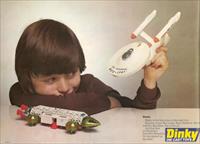
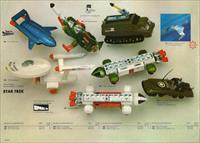
The 1977 trade catalogue on page 2: "Dinky is the big name in die-cast toys. Big play value. Big range. Big features. Big in military. Big afloat. Big in the air. And the new packaging is specially designed for big impact on the shelf." The space range appeared on page 4; each came in a shipping pack of 6.
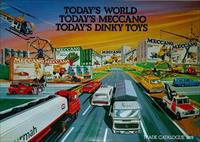
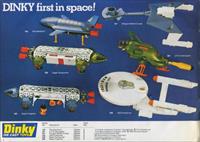

The 1978 trade catalogue has a spread titled "Dinky first in space!". "From the beginning, Dinky have dominated the space race with their highly successful models of TV vehicles. The space film boom we predicted is about to happen so don't miss this opportunity to send your sales rocketing! Dinky is also helping to win your space battle - the battle to optimise profit on shelf space. For 1978, over twenty toys have been dropped from the range, and only sure-fire winners added - like these space craft and the paramedic vehicles from the exciting "Emergency" TV series." The Freighter has now changed colour, from white to blue.
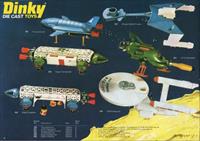

This spread was from the 1979 Trade Catalogue ("Tomorrow's Sales with Today's Meccano and Dinky"). "Means action all the way"
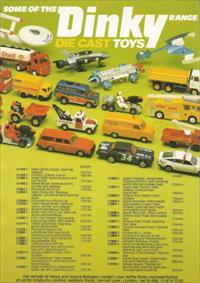
A 1980 trade leaflet. Notice gives contact details for Airfix, the parent company. The Dinky factory closed in November 1979, so there was not going to be any future releases.
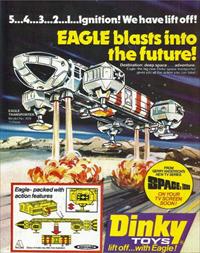
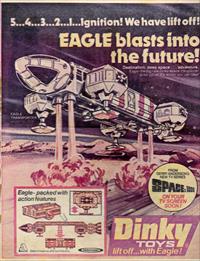
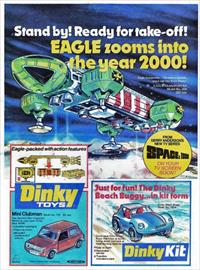
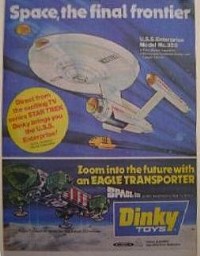
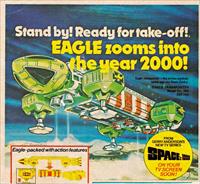
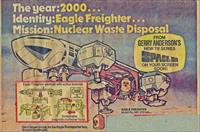
UK adverts. Note the white Eagle transporter in the first advert. UK adverts mention "Gerry Anderson's Space:1999", indicating the name recognition of the producer.
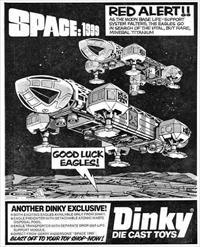
UK comic advert. "Red alert!! As the moon base life-support system falters, the Eagles go in search of the vital, but rare, mineral titanium" "Good luck Eagles!"
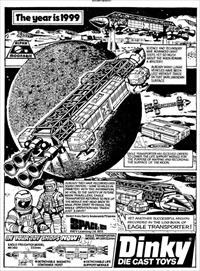
UK comic advert. "The year is 1999"
"Science and technology have advanced giant steps, yet so about the moon remains a mystery. Already many vehicles have been lost without trace on that dark, unknown surface."
"Eagle Transporter has received orders to lower the life support module for the purpose of mapping and recording the surface of the moon."
"Already they have recorded over 30,000 craters - some 50 miles in diameter! With this information, so vital to the safety of the future moon travellers, Eagle Transporter returns to pick up the module and head back to base. From start to finish, the whole operation has taken just 3 days!"
"Yet another successful mission recorded in the log book of Eagle Transporter!"
Note this story doesn't follow the TV series scenario at all.
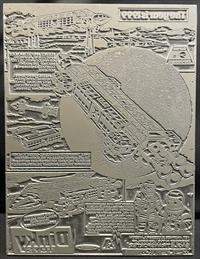
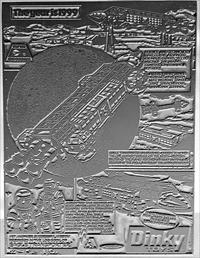
This printing plate for a variation of the "year is 1999" advert appeared on ebay in 2024; the positive image is shown alongside. The underlying artwork is the same, but the text boxes have been moved and altered, and the bottom left plan removed. One text box is significantly different: "Eagle Transporter has received orders to lower the life support module on the south-western sector of the planet for the purpose of mapping and recording the peculiarities of the Moons formation." The next box has slightly different text: "Eagle Transporter returns at the appointed time to pick up the module and head back to base."
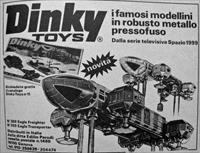
A 1975 Italian advert. Dinky was popular in many countries in Europe, and had a manufacturing plant in France from the 1930s until 1972.
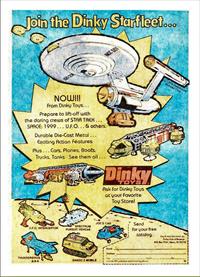
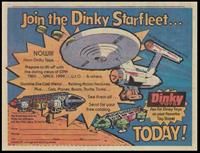
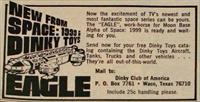
US advertising used in comics.
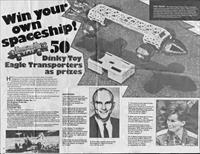
1975 Dinky Eagle competition from the UK children's comic Speed and Power (shortly before it was absorbed into Look and Learn).
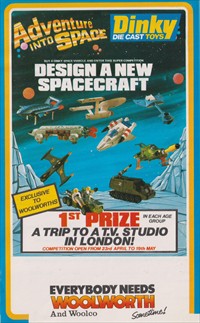
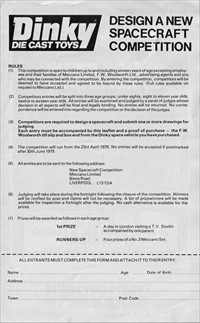
1979 competition from the UK store Woolworth (founded in Britain in 1909, and part-owned by the American parent chain until 1982, it was almost universally known as "Woolies"). In November 1979, Dinky closed the Binns Road factory.
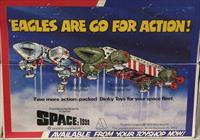
Dinky packaging promoted other models. This is the back of the 1978 "Galactic War Chariot" (number 361), also sold as the "Zygon war chariot", a weird composite toy made using a lunar rover, a missile launcher from the UFO Shado Mobile and the engines from Joe 90's car (which had been discontinued in 1976).
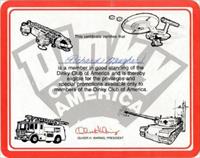
In the US, Dinky was distributed by Ava International of Waco, Texas (who also handled Airfix). They ran a children's mail club, called "Dinky Club of America". Children received a certificate (which featured an Eagle), Dinky stickers, promotional leaflets, newsletters promoting the latest models, and an order form (Dinky ran a similar newsletter in the UK between 1958-1962, which was so successful the volume overwhelmed staff, and the company closed the club).
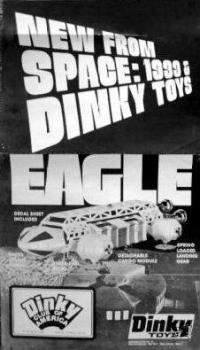
A poster produced by the Dinky Club of America. "New from Space: 1999 & Dinky Toys" "Decal sheet included", "Baked enamel finish", "Super-real detail", "Detachable Cargo Module", "Spring loaded landing gear".
Copyright Martin Willey.